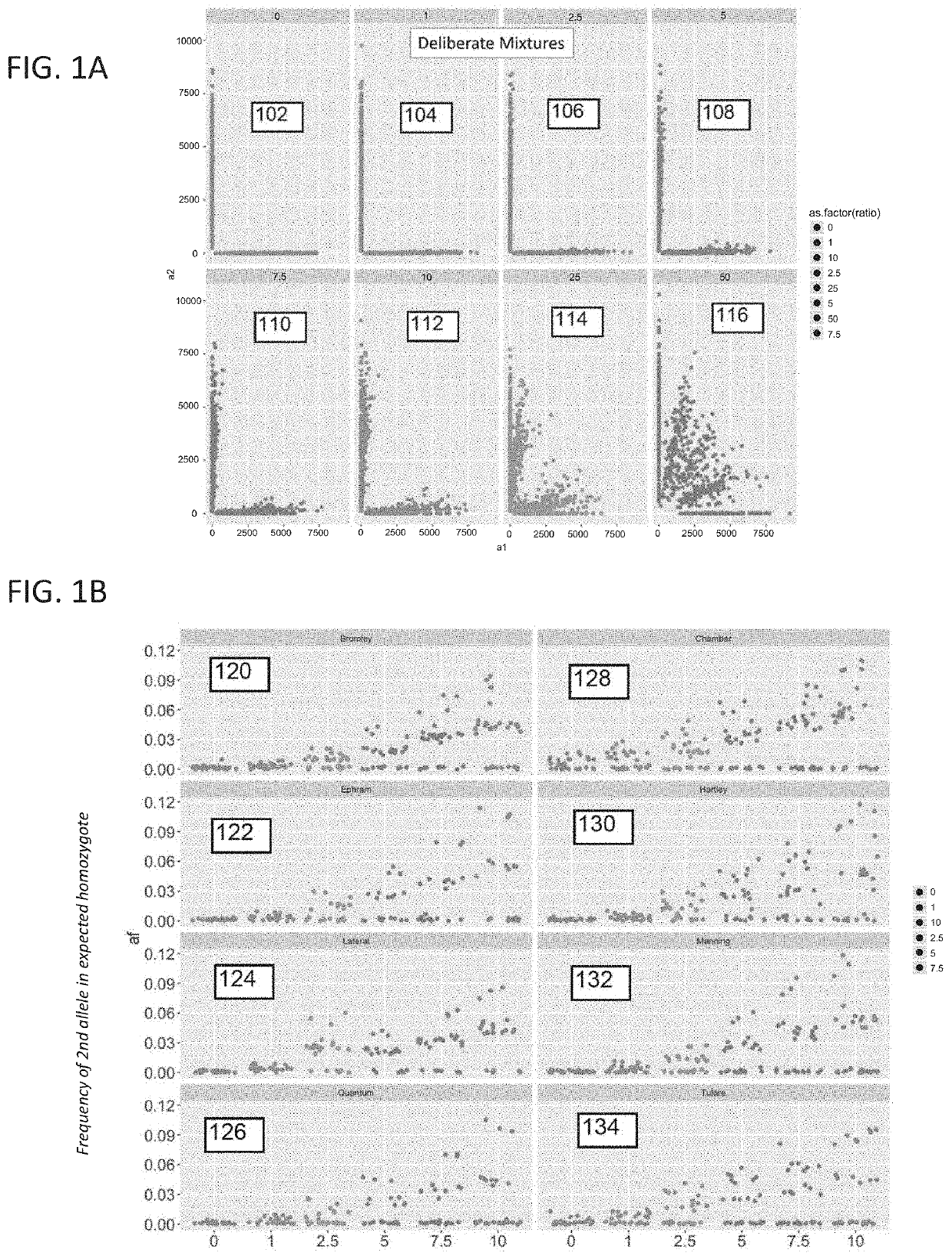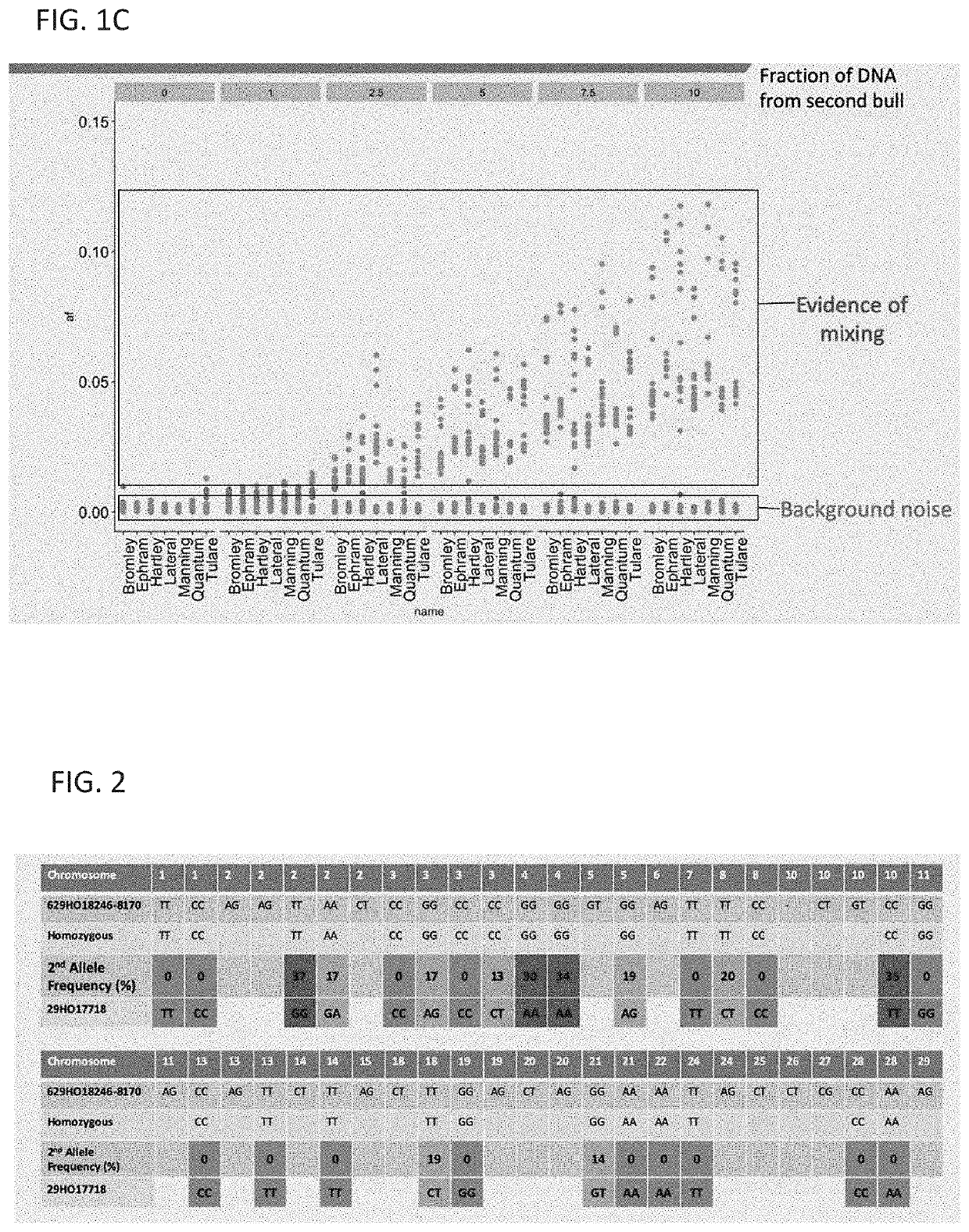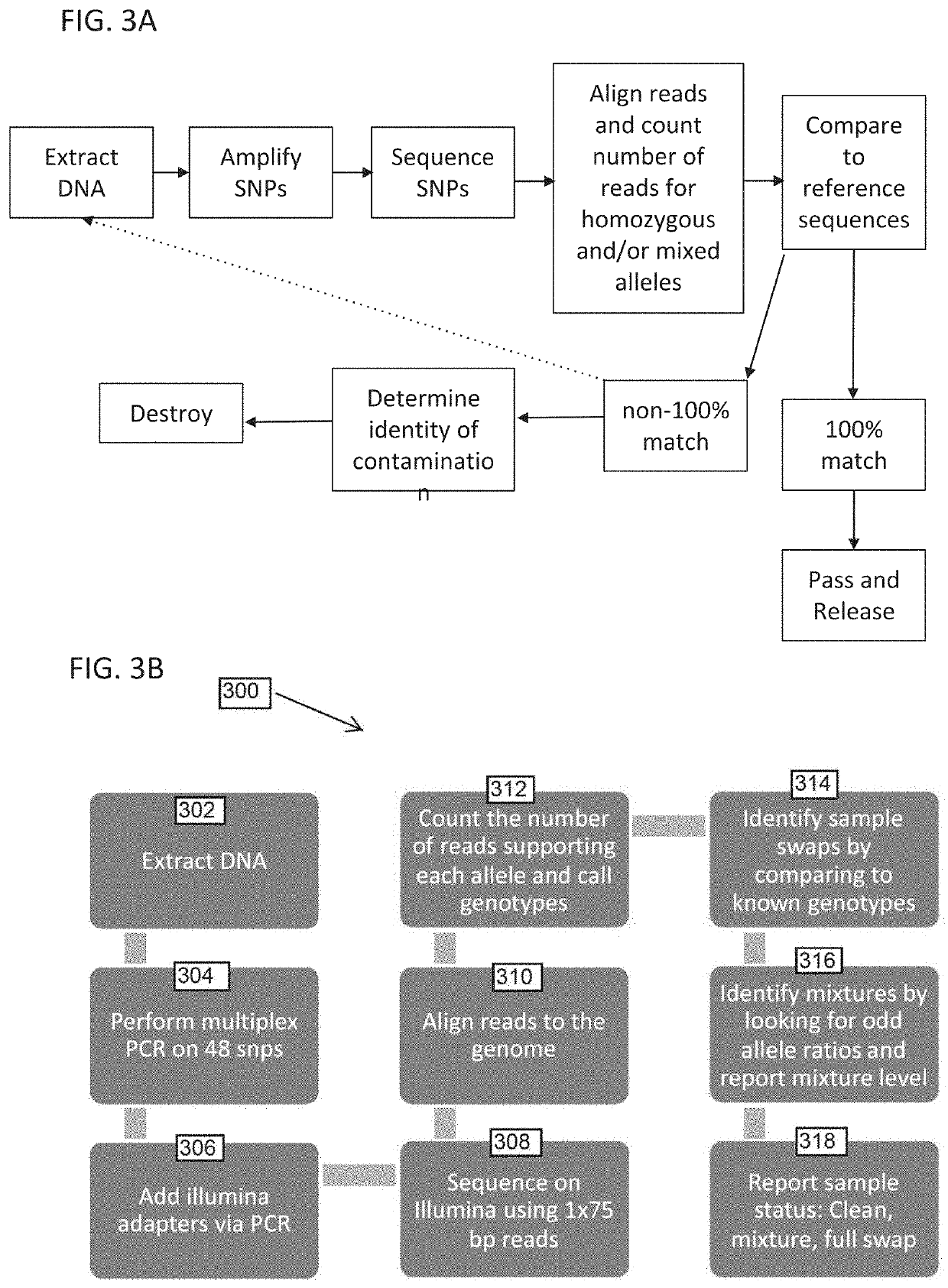Methods and systems for processing genetic samples to determine identity or detect contamination
a technology for detecting contamination and genetic samples, applied in the field of amplification, sequencing and analyzing genetic samples, can solve the problems of mixing or contamination, labeling may be incorrect, sample labels may be incorrectly read, etc., and achieves easy, fast and highly sensitive identity confirmation, avoiding costly errors, and reducing costs
- Summary
- Abstract
- Description
- Claims
- Application Information
AI Technical Summary
Benefits of technology
Problems solved by technology
Method used
Image
Examples
example 1
[0083]The following is a non-limiting example of the present invention. It is to be understood that said example is not intended to limit the present invention in any way. Equivalents or substitutes are within the scope of the present invention.
[0084]First, DNA extraction is performed using standard methods. A multiplex PCR is then performed using Qiagen Multiplex PCR Master Mix (Cat no: 206145) and 48 combined primer pairs. The product is then bead cleaned and verified for amplification on a gel. A second PCR is run to add the Illumina adapter sequences and barcodes. The samples are then pooled and sequenced on a next-generation sequencer (NGS) such as an Illumina sequencer using 1×75 bp reads. The samples are demultiplexed and binned by barcode by bcl2fastq. The fastqs are aligned to the UMD3.1 genome using BWA MEM. Allele frequencies (AF) for each SNP are calculated by counting the number of reads that contain each allele on a 0-0.5 scale, where the smaller allele is used in the ...
example 2
[0086]The following is a non-limiting example of the present invention. It is to be understood that said example is not intended to limit the present invention in any way. Equivalents or substitutes are within the scope of the present invention.
[0087]The following example describes an overview of particular embodiments of the methods and systems of the present invention.
[0088]DNA is extracted from collected sperm cells that have undergone processing and packaging into straws. The process below describes analyzing the DNA against known / reference DNA of the bull to help ensure that the DNA in the straw is the DNA of the bull printed on the straw. Likely contaminators are the analysis system's (algorithm's) best guess at a contaminator with the options being all bulls processed within a single run (e.g., in certain embodiments, if the true contaminator is not present in the sequencing run, it may not be identified). Note also that the sequencing run can comprise DNA from a variety of s...
example 3
[0096]The following is a non-limiting example of the present invention. It is to be understood that said example is not intended to limit the present invention in any way. Equivalents or substitutes are within the scope of the present invention.
[0097]The following example describes an overview of the analysis system, e.g., application used for analysis and quality control. FIG. 4 shows a schematic view of the analysis system integrated with the sequencer and internal database, as well as quality control.
[0098]A user (e.g., technician) can log into the user interface of the analysis system (e.g., application). The user may use the system for reviewing certain samples, e.g., confirming genetic matches, determining whether or not a sample may have been a mixture, etc.
[0099]The analysis system may feature visual indicators that alert a user to a particular issue (e.g., possible mixture, lack of quantity, not a 100% match to expected reference animal, etc.).
[0100]A batch is called a run,...
PUM
| Property | Measurement | Unit |
|---|---|---|
| Fraction | aaaaa | aaaaa |
| Fraction | aaaaa | aaaaa |
| Fraction | aaaaa | aaaaa |
Abstract
Description
Claims
Application Information
 Login to View More
Login to View More - R&D
- Intellectual Property
- Life Sciences
- Materials
- Tech Scout
- Unparalleled Data Quality
- Higher Quality Content
- 60% Fewer Hallucinations
Browse by: Latest US Patents, China's latest patents, Technical Efficacy Thesaurus, Application Domain, Technology Topic, Popular Technical Reports.
© 2025 PatSnap. All rights reserved.Legal|Privacy policy|Modern Slavery Act Transparency Statement|Sitemap|About US| Contact US: help@patsnap.com



